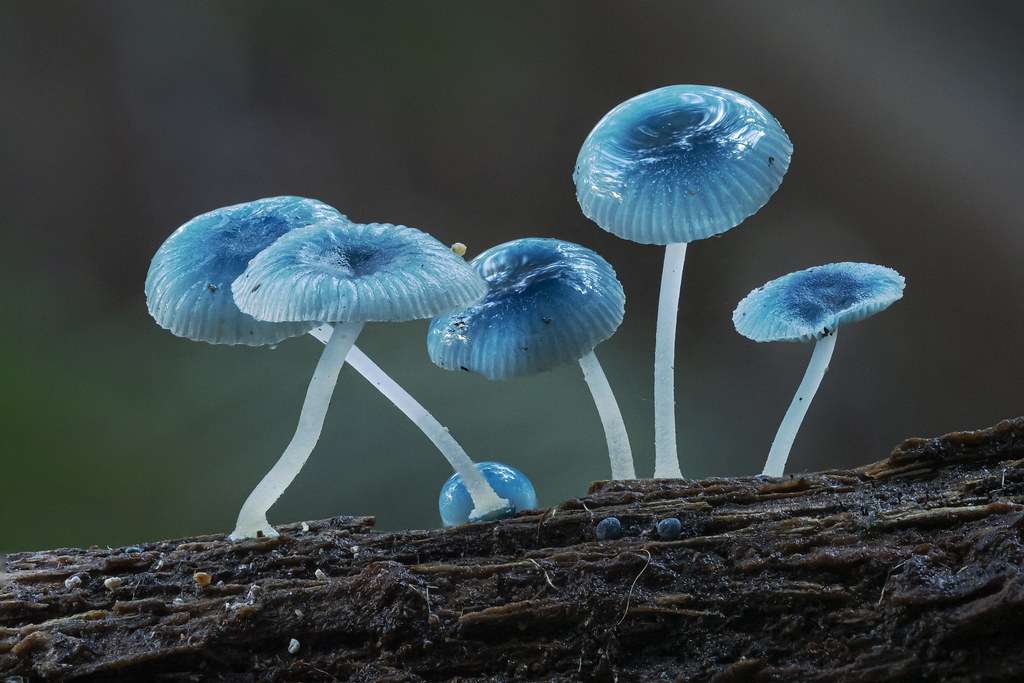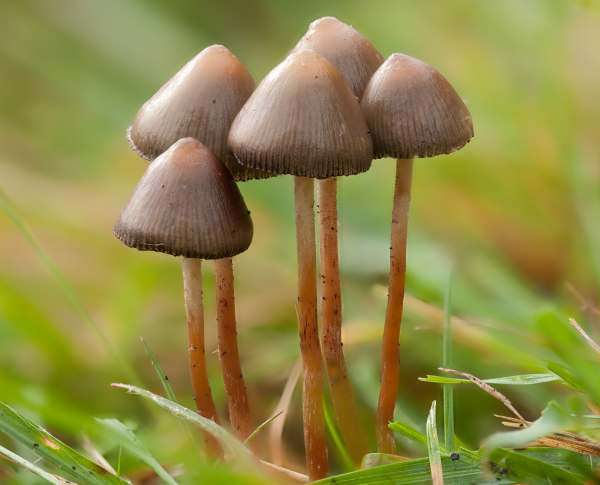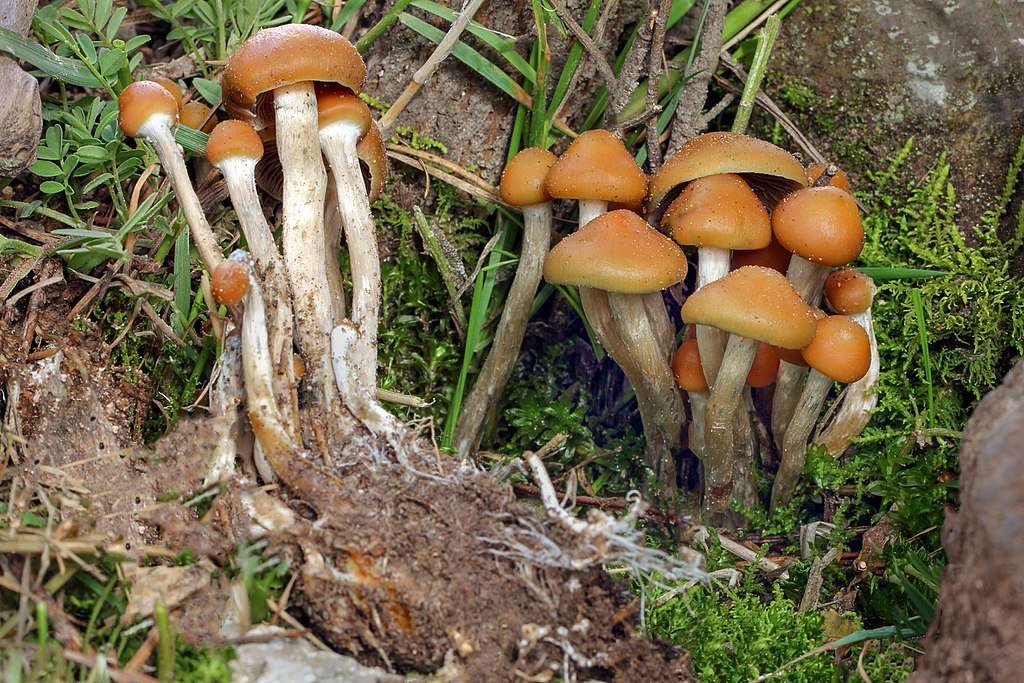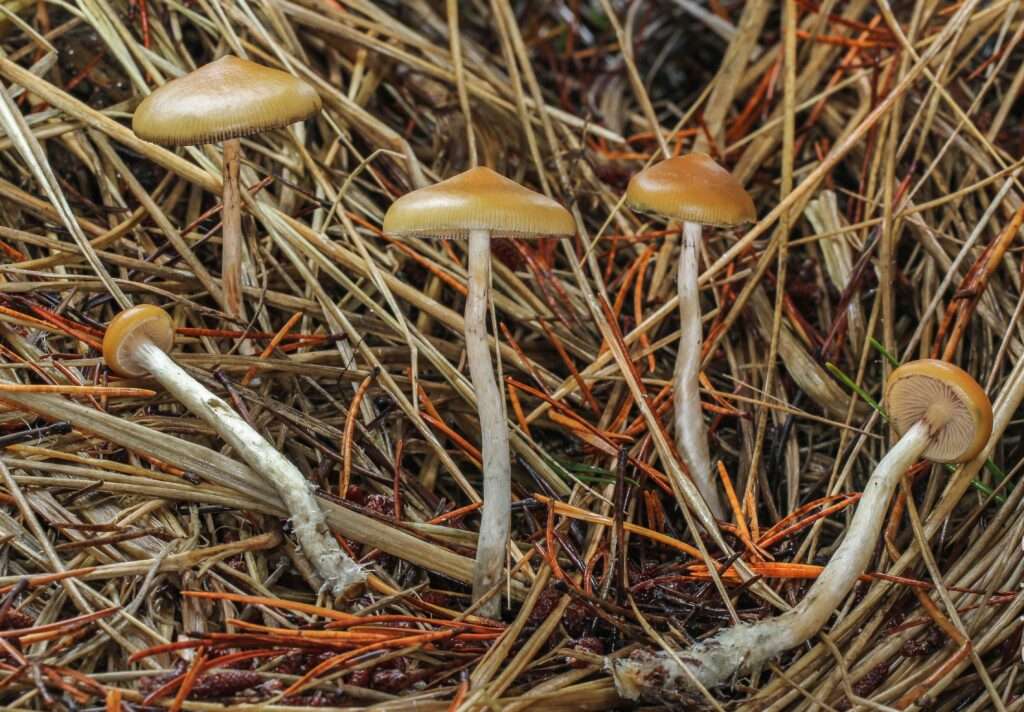
Scientific name
Mycena interrupta
Description
Pixie’s parasol is a beautiful, delicate, and saprotrophic mushroom that is also called a ‘Jungle Dragon’. These mushrooms have a translucent cyan-blue-colored cap. Their caps range in size from 0.6- 2 cm. As they develop, they are spherical, but as they grow, they become wide and convex with a slight depression in the center. The caps are usually slimy and sticky, especially in wet conditions. The stipe normally measures 1- 2 cm in length and is 0.2- 0.4 cm in width. It is smooth and white and is attached to the wooden substrate from the base. The gills of these mushrooms are white with adnexed blue edges. Their spores are smooth, white, and ellipsoid in shape. Some species belonging to this genus are edible, although some mycologists believe they may potentially contain unexplained poisons. As a result, the genus Mycena, which includes M. interrupta, is deemed inedible.

Habitat
Pixie’s Parasol is endemic to New Zealand, Australia, South Australia, Victoria, Queensland, and Chile. They are found in eucalyptus woods and rainforests. They grow in small colonies on decaying, damp wood. Its distribution is Gondwanan. Gondwana was a prehistoric continental plate that broke apart some 180 million years ago into the continents we know today, including Australia and South America.
Uses/Importance
Several mycologists think that some Mycena species may have psilocybin or psilocin, although nothing has been identified with biochemical investigations, since they display a “bluing response”. This response describes a “bluing” shift that takes place in the flesh of psilocybin-containing mushrooms when bruised or broken. However, there is no scientific confirmation of this and it is purely based on anecdotal information.





